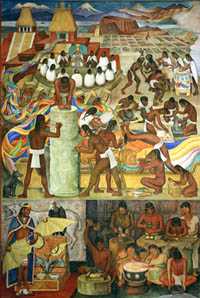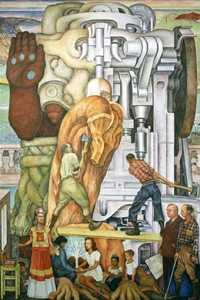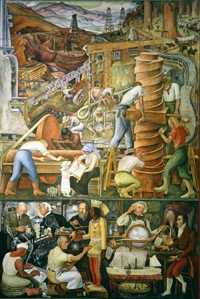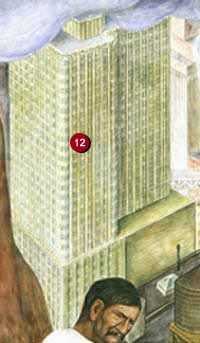Pan American Unity Mural





Diego Rivera is internationally acknowledged as one of the 20th century's most important muralists and influential artists. Rivera's style is a unique synthesis of European painting, socialist ideals, and the cultural riches of pre-Columbian indigenous Mexico.
He gave the people of the San Francisco Bay Area an extraordinary work of Pan American art and an inspiring vision of Pan-American Unity. His grand, 22' high and 74' long, mural, is entitled “Unión de la Expresión Artistica del Norte y Sur de este Continente” (The Marriage of the Artistic Expression of the North and of the South on this Continent). It is a sweeping synthesis of the art, religion, history, politics, and technology of the Americas that is as timely now as it was sixty years ago.
Rivera painted this masterpiece, now commonly called Pan American Unity, in 1940 as part of the Golden Gate International Exposition on Treasure Island in the San Francisco Bay. He was commissioned by the organizers of the 1940 Golden Gate International Exposition to paint a large-scale fresco during the run of the fair. It was the centerpiece of Art in Action, an innovative exhibit where fairgoers could watch artists create their work.
The mural includes three self-portraits and a portrait on his wife, artist Frida Kahlo. It is a unique combination of an artist in his prime and a critical moment in world history brought together on a monumental scale. It is arguably the most important work of art created in the Bay Area.
The Timothy Pflueger designed Pacific Telephone Building and the 450 Sutter Building (the two tallest buildings in San Francisco) are featured in Panel 2, Elements of Past and Present. With a graceful swan dive, the City College diver Helen Crlenkovich blends ancient Mexico into the Bay Area. Rivera wrote, "The conquest of time and space was symbolized by a woman diving and the Golden Gate Bridge spanning San Francisco Bay." In the upper section, the contemporary Mexican artisan carving the sculpture of Quetzacoatl, the plumed serpent god, represents the continuity of Mexican ancient culture. In the lower section, Rivera depicted himself painting the "portraits of the great liberators--Washington, Jefferson, Hidalgo, Morelos, Bolivar, Lincoln, and John Brown."
After the fair closed, the mural was intended to be placed in the new library of San Francisco Junior College (now City College of San Francisco). This library was part of a grand architectural plan developed by Timothy Pflueger, a prominent local architect, one of the organizers of the fair, and Rivera's patron and friend.
World War Two interrupted these plans. Pflueger's library was never built and the ten panels of the mural were crated and stored first on the fairgrounds and then at the College until Rivera's death in 1957. That year, Milton Pflueger, Timothy's younger brother, proposed to install the mural in the lobby of the new campus theater. The mural was moved into this lobby in 1961.
The Diego Rivera Mural Project, sponsored by the City College of San Francisco, has as its mission the return of the mural to the position of public importance and influence envisioned by its creator.

For more information, visit: http://www.ccsf.edu/NEW/en/about-city-college/diego-rivera-mural.html
